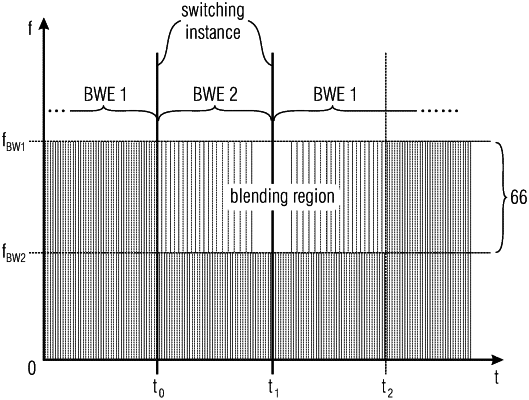| CPC G10L 19/04 (2013.01) [G10L 19/18 (2013.01); G10L 21/038 (2013.01)] | 10 Claims |

|
1. Decoder supporting, and being switchable between, at least two modes so as to decode an information signal, wherein the decoder comprises a microprocessor, an electronic circuit, or a programmed computer configured to,
in a first of the at least two modes, decode the information signal within a first bandwidth in a first manner, and in a second of the at least two modes, decode the information signal within a second bandwidth, which is equal to or different from the first bandwidth, in a second manner which is different from the first manner,
responsive to a switching instance of at least one of from the first mode to the second mode and from the second mode to the first mode, perform temporal smoothing and/or blending at a transition between a first temporal portion of the information signal, preceding the switching instance, and a second temporal portion of the information signal, succeeding the switching instance, in a manner confined to a high-frequency spectral band which overlaps the first bandwidth and the second bandwidth;
wherein the high-frequency spectral band overlaps with a spectral BWE extension portion of one of the first mode or the second mode.
|